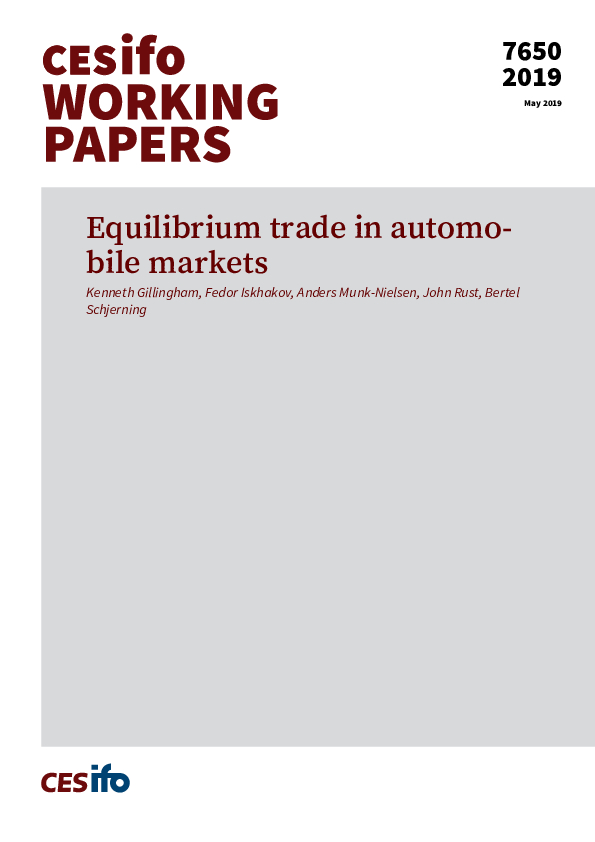Equilibrium trade in automobile markets
CESifo, Munich, 2019
CESifo Working Paper No. 7650

We introduce a computationally tractable dynamic equilibrium model of the automobile market where new and used cars of multiple types (e.g. makes/models) are traded by heterogeneous consumers. Prices and quantities are determined endogenously to equate supply and demand for all car types and vintages, along with the ages at which cars are scrapped. The model allows for transactions costs, taxes, flexible specifications of car characteristics, consumer preferences, and heterogeneity. We apply the model to two examples: a revenue-neutral replacement of the new vehicle registration tax with a higher fuel tax and a hypothetical “merger to monopoly” in an oligopolistic new car market. We show substantial gains in consumer welfare from the tax policy change, as well as important effects on government revenues, automobile prices, driving, fuel consumption and CO2 emissions, while the merger leads to substantial welfare losses.
Energy and Climate Economics
Empirical and Theoretical Methods